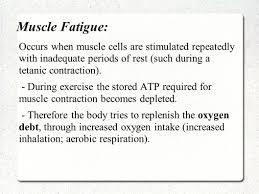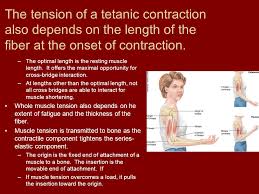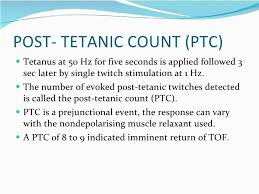Beetroot Juice Increases Human Muscle Force without Changing Ca2+-Handling Proteins
WHITFIELD, JAMIE1; GAMU, DANIEL2; HEIGENHAUSER, GEORGE J. F.3; VAN LOON, LUC J. C.4; SPRIET, LAWRENCE L.1; TUPLING, A. RUSSELL2; HOLLOWAY, GRAHAM P.1
Medicine & Science in Sports & Exercise: October 2017 - Volume 49 - Issue 10 - p 2016–2024
doi: 10.1249/MSS.0000000000001321
Basic Sciences.
Dietary inorganic nitrate (NO3−) supplementation improves skeletal muscle (SkM) contractile efficiency, and although rodent literature has suggested improvements in calcium handling or redox modifications as likely explanations, the direct mechanism of action in humans remains unknown.
Purpose: This study aimed to examine the effects of 7 d of beetroot juice (BRJ) supplementation on SkM contractile characteristics and function.
Methods: Recreationally active males (n = 8) underwent transcutaneous electrical muscle stimulation of the vastus lateralis for the evaluation of contractile characteristics before and after 7 d of BRJ supplementation (280 mL·d−1, ~26 mmol NO3−). An additional group of individuals (n = 8) followed the same supplementation protocol but underwent SkM biopsies pre- and post-supplementation for the determination of proteins associated with calcium handling via Western blotting, and the ratio of reduced/oxidized glutathione (GSH:GSSG), an indicator of cellular redox state, via high-performance liquid chromatography (HPLC).
Results: After supplementation, there was no change in maximal voluntary force production (602 ± 50 vs 596 ± 56 N) or electrically induced tetanic contractions. By contrast, force production was increased at 10 Hz electrical stimulation (41.1% ± 2.3% vs 37.6% ± 2.4% of peak force, P < 0.05), as was peak twitch tension (164.0 ± 12.5 vs 136.5 ± 7.2 N, P < 0.01) and maximal rates of force development and relaxation (3582.8 ± 382.3 vs 2575.7 ± 196.2 and −2752.4 ± 423.9 vs −2104.4 ± 249.0 N·s−1, respectively, P < 0.05). Despite these measurements implicating a change in calcium handling, the content of associated proteins (SERCA1a, SERCA2a, dihydropyradine receptor, ryanodine receptor, and calsequestrin) and the GSH:GSSG ratio were unaltered by BRJ.
Conclusion: BRJ supplementation increases force production at low-stimulation frequencies; however, in human SkM, this is independent of changes in redox stress or the expression of protein targets associated with calcium handling.





WHITFIELD, JAMIE1; GAMU, DANIEL2; HEIGENHAUSER, GEORGE J. F.3; VAN LOON, LUC J. C.4; SPRIET, LAWRENCE L.1; TUPLING, A. RUSSELL2; HOLLOWAY, GRAHAM P.1
Medicine & Science in Sports & Exercise: October 2017 - Volume 49 - Issue 10 - p 2016–2024
doi: 10.1249/MSS.0000000000001321
Basic Sciences.
Dietary inorganic nitrate (NO3−) supplementation improves skeletal muscle (SkM) contractile efficiency, and although rodent literature has suggested improvements in calcium handling or redox modifications as likely explanations, the direct mechanism of action in humans remains unknown.
Purpose: This study aimed to examine the effects of 7 d of beetroot juice (BRJ) supplementation on SkM contractile characteristics and function.
Methods: Recreationally active males (n = 8) underwent transcutaneous electrical muscle stimulation of the vastus lateralis for the evaluation of contractile characteristics before and after 7 d of BRJ supplementation (280 mL·d−1, ~26 mmol NO3−). An additional group of individuals (n = 8) followed the same supplementation protocol but underwent SkM biopsies pre- and post-supplementation for the determination of proteins associated with calcium handling via Western blotting, and the ratio of reduced/oxidized glutathione (GSH:GSSG), an indicator of cellular redox state, via high-performance liquid chromatography (HPLC).
Results: After supplementation, there was no change in maximal voluntary force production (602 ± 50 vs 596 ± 56 N) or electrically induced tetanic contractions. By contrast, force production was increased at 10 Hz electrical stimulation (41.1% ± 2.3% vs 37.6% ± 2.4% of peak force, P < 0.05), as was peak twitch tension (164.0 ± 12.5 vs 136.5 ± 7.2 N, P < 0.01) and maximal rates of force development and relaxation (3582.8 ± 382.3 vs 2575.7 ± 196.2 and −2752.4 ± 423.9 vs −2104.4 ± 249.0 N·s−1, respectively, P < 0.05). Despite these measurements implicating a change in calcium handling, the content of associated proteins (SERCA1a, SERCA2a, dihydropyradine receptor, ryanodine receptor, and calsequestrin) and the GSH:GSSG ratio were unaltered by BRJ.
Conclusion: BRJ supplementation increases force production at low-stimulation frequencies; however, in human SkM, this is independent of changes in redox stress or the expression of protein targets associated with calcium handling.

No comments:
Post a Comment